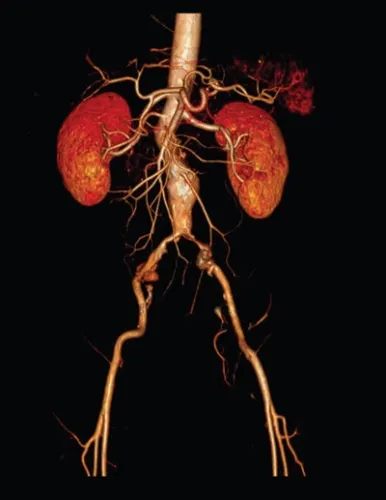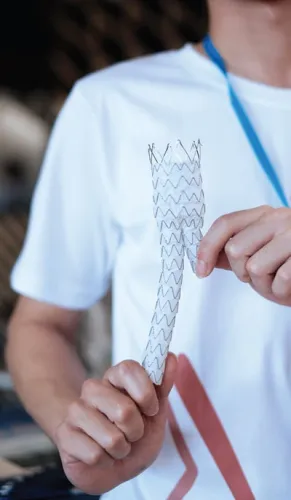4 Tips Focus Infrarenal Aorta Endograft Coding
Distinguish cases involving rupture. When your surgeon performs an endograft procedure in the abdominal infrarenal aorta, you face a plethora of coding pitfalls. Follow our experts’ tips to avoid the snags posed by multiple code choices, specific CPT® guidelines, and your surgeon’s documentation. Tip 1: Focus on Code Family You will turn to codes 34701-34706 (Endovascular repair of infrarenal aorta … by deployment of an … endograft …) when your surgeon uses an endograft to treat an abdominal aortic pathology in the infrarenal abdominal aorta, with or without rupture. The treated pathologies addressed by these codes include aneurysm, pseudoaneurysm, dissection, penetrating ulcer, or traumatic disruption, according to CPT® guidelines. Notice: Select appropriate code(s) from the 34701-34706 range if the pathology and treatment extend to the iliac artery, but look to different codes (34707 or 34708, Endovascular repair of iliac artery …) for repair in the iliac artery alone. Documentation: Although CPT® uses the terminology, “endograft,” your surgeon’s op note might describe the procedure using different terminology such as covered stent, endovascular graft, endoprosthesis, or stent graft. You can also match up your surgeon’s work to the type of device by referring to CPT® guidelines stating that an “infrarenal aortic endograft may be an aortic tube device, a bifurcated unibody device, a modular bifurcated docking system with docking limb(s), or an aorto-uni-iliac device.” Common: All codes in the range 34701-34706 involve certain specific services, including selecting and sizing the device before the procedure. During the surgery, the codes describe all non-selective catheterization(s) and all associated radiological supervision and interpretation for the introduction, positioning, and deployment of the endograft. Tip 2: See How Rupture Impacts Coding Codes in the range 34701-34706 divide over whether the pathology involves rupture. For example, look at one of the code pairs in the code set: “Ruptures are defined as clinical and/or radiographic evidence of acute hemorrhage,” said Sharon Jane Oliver, CPC, CDEO, CPMA, CRC at the 2020 Virtual HEALTHCON session “Peripheral Vascular Coding/Compliance.” Codes in the range 34701-34706 that involve rupture repair are 34702, 34704, and 34706. On the other hand, a chronic contained rupture is considered a pseudoaneurysm, according to Oliver. For this condition, you should report the appropriate code 34701, 34703, or 34705. Tip 3: Identify Specific Treatment Zones The CPT® guidelines clearly identify the treatment zones for these endovascular procedures, according to Oliver. “The treatment zone for endograft procedures is defined by those vessels that contain an endograft(s) (main body, docking limb[s], and/or extension[s]) deployed during that operative session,” per the CPT® guidelines. You should look for infrarenal aortic treatment zones that pair with the following CPT® codes: Notice that the distinction between 34703-34704 and 34705-34706 is whether the infrarenal aorta repair also includes a uni-iliac endograft or a bi-iliac endograft. Tip 4: Don’t Forget Rules for Add-on Codes +34717 and +34713 If the surgeon also percutaneously closes the femoral artery after delivering the endovascular stent, you might also need to report add-on code +34713 (Percutaneous access and closure of femoral artery for delivery of endograft through a large sheath (12 French or larger), including ultrasound guidance, when performed, unilateral…) with the appropriate code from the range 34701-34706. Do not report +34713 for percutaneous closure of femoral artery after delivery of endovascular prosthesis if the surgeon used a sheath smaller than 12 French. You should report +34713 only once per side, per the CPT® guidelines. For a bilateral procedure, you should report +34713 twice. “You should never append modifier 50 (Bilateral procedure) to +34713,” says Christina Neighbors, MA, CPC, CCC, Coding Quality Auditor for Conifer Health Solutions, Coding Quality & Education Department, and member of AAPC’s Certified Cardiology Coder steering committee. Code +34717: If you report a code from the range 34703-34706, you may also find yourself needing to report an add-on code new to CPT® 2020. That code is +34717 (Endovascular repair of iliac artery at the time of aorto-iliac artery endograft placement by deployment of an iliac branched endograft including pre-procedure sizing and device selection, all ipsilateral selective iliac artery catheterization(s)…). You should report +34717 for a service provided at the same surgical session as the aorto-iliac artery endograft placement (codes 34703-34706) “for deployment of a bifurcated endograft in the common iliac artery with extension(s) into both the internal iliac and external iliac arteries, when performed, to maintain perfusion in both vessels for treatment of iliac artery pathology (with or without rupture) …,” according to the CPT® guidelines. The guidelines define an iliac branched endograft as “a multi-piece system consisting of a bifurcated device that is placed in the common iliac artery and then additional extension(s) are placed into both the internal iliac artery and external iliac/common femoral arteries as needed, as well as a proximal extension that overlaps with an aorto-iliac endograft, when performed.” Also remember that “all additional extensions proximally into the common iliac artery or distally into the external iliac and/ or common femoral arteries are inherent to these codes.” You should report +34717 only once per side, per the CPT® guidelines. For a bilateral procedure, you should report +34717 twice. You should never append modifier 50 to +34717. Distinction: If the surgeon provides endovascular repair using an iliac branched endograft (extending into the internal and external iliac arteries) at a separate surgical session, not at the same time as aorto-iliac artery endograft placement, you should not use +34717, but should instead report a different code that is also new in CPT® 2020. In those cases, you can use 34718 (Endovascular repair of iliac artery, not associated with placement of an aorto-iliac artery endograft at the same session, by deployment of an iliac branched endograft, including pre-procedure sizing and device selection, all ipsilateral selective iliac artery catheterization(s), all associated radiological supervision and interpretation, and all endograft extension(s) proximally to the aortic bifurcation and distally in the internal iliac, external iliac, and common femoral artery(ies), and treatment zone angioplasty/stenting, when performed, for other than rupture (eg, for aneurysm, pseudoaneurysm, dissection, arteriovenous malformation, penetrating ulcer), unilateral). Together, codes +34717 and 34718 replaced deleted Category III code 0254T (Endovascular repair of iliac artery bifurcation (eg, aneurysm, pseudoaneurysm, arteriovenous malformation, trauma, dissection) using bifurcated endograft from the common iliac artery into both the external and internal iliac artery, including all selective and/or nonselective catheterization(s) required for device placement and all associated radiological supervision and interpretation, unilateral) in CPT® 2020.


